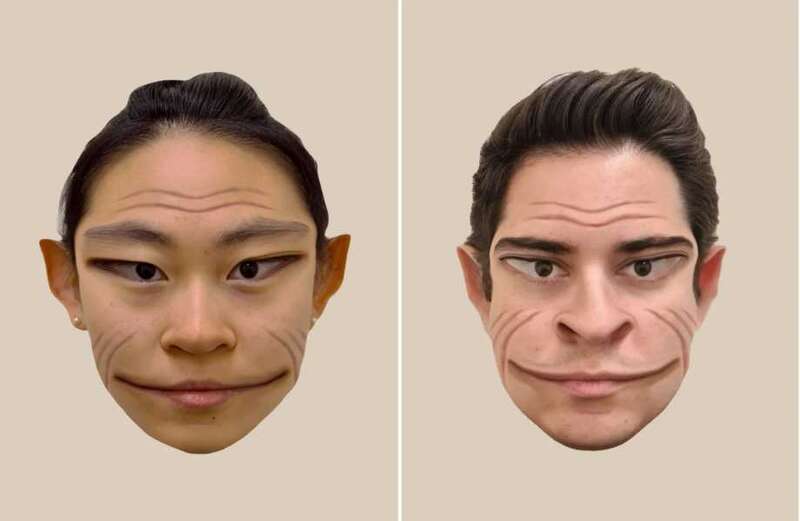A CONDITION that warps peoples faces so they look like "demons" sounds like the stuff of nightmares.
But it's the everyday reality for people with an extremely rare condition called prosopometamorphopsia (PMO).


'Prosopo' is the Greek word for face, while 'metamorphopsia' describes transformation or distortion.
Specific symptoms of PMO can vary from case to case, but it can affect the shape, size, colour, and position of facial features.
They may droop, appear smaller or larger than normal, be out of position, or seem stretched.
 Hospitals run out of oxygen and mortuaries full amid NHS chaos
Hospitals run out of oxygen and mortuaries full amid NHS chaos
Unsurprisingly, people with this rare condition can find it disturbing or unnerving to look at other people's faces.
But PMO isn't permanent, according to the Dartmouth-based website about the condition, in most cases lasting a few days or weeks.
Some people, however, might continue perceiving facial distortions for years.
According to Dr Brad Duchaine, a professor of psychological and brain sciences and principal investigator of the Social Perception Lab at Dartmouth, only around 75 cases reports on people with PMO have been published so far, so the condition appears to be quite rare.
The poorly understood condition that warps and disfigures facial features can be difficult to visualise if you're not experiencing it yourself.
But a new Dartmouth study published in the "Clinical Pictures" section of The Lancet sought to provide accurate and photorealistic representations of the facial distortions experienced by an individual with PMO.
Researchers collaborated with a patient with who has the condition to reconstruct faces stretched and pulled beyond recognition, to capture the reality of what it's like to live with PMO.
The patient, a 58-year-old male with PMO, sees faces without any distortions when they are viewed on a screen and on paper, but he sees distorted faces that appear "demonic" when viewed in-person.
Most PMO cases however, see distortions in all contexts, so his case is especially rare and presented a unique opportunity for researchers to accurately depict his distortions.
For the study, the researchers took a photograph of a person's face.
 Mystic Mag's 2023 predictions include strikes, sleaze, self pity and separation
Mystic Mag's 2023 predictions include strikes, sleaze, self pity and separation
Then, they showed the patient the photograph on a computer screen while he looked at the real face of the same person.
The researchers obtained real-time feedback from the patient on how the face on the screen and the real face in front of him differed and modified the photograph using computer software to match the distortions perceived by the patient.
The resulting images resemble alien-like creatures or demons, with deeply furrowed brows, pointed ears and their eyes and mouths stretched to the edges of their face.
Lead author Antônio Mello, a PhD student in the Department of Psychological and Brain Sciences at Dartmouth, said: "In other studies of the condition, patients with PMO are unable to assess how accurately a visualisation of their distortions represents what they see because the visualisation itself also depicts a face, so the patients will perceive distortions on it too.
"In contrast, this patient doesn’t see distortions on a screen. This means that the researchers were able to modify the face in the photograph, and the patient could accurately compare how similar his perception of the real face was to the manipulated photograph.
"Through the process, we were able to visualise the patient's real-time perception of the face distortions," Dr Mello explained.
In their research with other PMO cases, the co-authors state that some of their PMO participants have seen health professionals who wanted to help but diagnosed them with another health condition, not PMO.
"We've heard from multiple people with PMO that they have been diagnosed by psychiatrists as having schizophrenia and put on anti-psychotics, when their condition is a problem with the visual system," Dr Duchaine added.
"And it's not uncommon for people who have PMO to not tell others about their problem with face perception because they fear others will think the distortions are a sign of a psychiatric disorder," says Duchaine.
"It's a problem that people often don't understand."





































